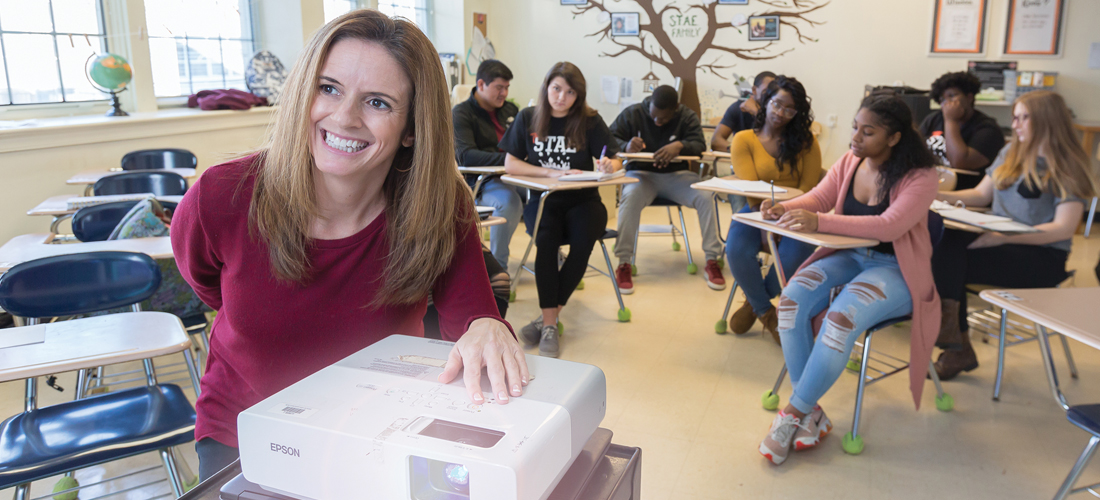Facing Fate
When the law of averages strikes
By Stephen E. Smith
Your risk for developing pancreatic cancer is about 1 in 65. The odds of your dying in a car crash are 1 in 100. If you’re about to undergo a hospital procedure, you have a 3 percent chance of experiencing a mishap. But, then, if you consider all the odds for all the possibilities, your chances of avoiding every disease, every mishap, is zilch. This law of averages spares no one.
Judy Goldman’s first memoir, Losing My Sister, a finalist for Southern Independent Booksellers Alliance for Memoir of the Year, worked, in part, from the above premise, and her latest memoir, Together: A Memoir of a Marriage and a Medical Mishap, is also the product of grim statistics, detailing a medical accident and the accompanying physical and emotional consequences that tested a marriage.
Life-altering calamities can begin with the best of intentions. Goldman’s husband, Henry, happened upon a newspaper ad for an outpatient procedure that would alleviate the persistent back pain he’d suffered for years. It all sounded reassuringly straightforward: a simple injection or two and an immediate resumption of a normal life. The doctor would use a fluoroscope to guide his injection of steroids and an anesthetic into the epidural space between the spine and the spinal cord. But when Henry was wheeled out from the procedure, his expression was “flat and abstracted.” He was paralyzed from the waist down.
The doctor assured Goldman that Henry’s reaction to the procedure was normal: “Your husband is going to be all right. It’ll just be a matter of time,” he said, reassuringly. But he was mistaken, and the consequences of the botched treatment unleashed in Goldman a desperate avalanche of emotions — depression, guilt, hopelessness, anger, fear, despair. Adding to her anguish, there was no explanation for Henry’s sudden physical disability. With the exception of the doctor who had administered the treatment — and he was not forthcoming — a faceless medical community offered few plausible answers. After the struggle and joy of four decades of marriage, after raising children and pursuing successful careers, after leading a responsible life together, the Goldmans had suffered a mind-numbing and perhaps irreversible catastrophe that would test their relationship to its core — a predicament in which Goldman had to assume the role of patient advocate in the complex medical morass America has created for itself.
Interspersed with the chapters detailing Goldman’s struggles with her husband’s sudden disability, she weaves the story of her early life, her marriage to Henry, their years together, all of which lend perspective and poignancy to their predicament. When she’d said yes to Henry’s marriage proposal, Goldman had already mapped out the path their lives would follow. “I was not only in love with him, I was in love with the idea of a husband and wife moving through life together, youth falling away, both growing slightly stooped, hard of hearing, Henry carrying my purse for me the way old men do, our soft, imperfect last years together.”
A second misadventure produced a catharsis. Two years after Henry’s debilitating procedure, Goldman was confronted by a ski-masked man pointing a pistol at her abdomen. She made a quick getaway. Henry, who was recovering from a shoulder operation precipitated by his back injury, was sitting beside her in the car’s passenger seat. “All of a sudden, I get it. Because somebody threatened me with a gun, I can finally cry — really cry — over what threatened Henry in that outpatient clinic two years ago. As though the holdup and the epidural are one thing. One single reminder that we’re all in danger every second. The world is waiting to trip us up.”
And there you have it: The world is waiting to trip us up. All that’s left is the long way back and the truths that such struggles reveal about relationships and the limits of human determination.
After intense rehab, Henry recovers much of his ability to walk, albeit with a cane and the constant attention of his faithful advocate. But Goldman was left to ponder an inescapable list of “if-onlys” — if only her husband hadn’t seen the ad in the newspaper; if only they’d tried other remedies; if only he’d decided to live with the pain; if only she’d waited with him before he received the epidural; if only she hadn’t made things worse by over-reacting. Mostly she had to question the very beliefs that formed the foundation of their marriage — the possibility of losing Henry and the notions she had early on about how they would grow old together. She became irritable, naggy and intensely introspective: “Maybe I’m really angry with Henry for threatening to fail physically. For even obliquely threatening to die. As though he has to earn my forgiveness for what happened to him. As though his medical condition is a betrayal.” Finally it all comes down to forgiveness — forgiving her husband, forgiving herself, forgiving the doctor responsible for administering the crippling epidural. Forgiving the world for tripping her up.
What we have in Together is a blueprint for coping with “mishaps.” Goldman skillfully articulates the communality of human experience, and she’s startlingly frank when relating the difficulties a patient advocate encounters. Finally, Together is about being married, about becoming a part of another person and building on the long-term relationship we enter into when we take our marriage vows. If Goldman doesn’t offer easy answers to the vexing questions of life, she does outline a process by which we can puzzle our way into the moment and make the best of what fate offers us: “We must scrap the illusion that marrying that one perfect person will end our suffering, bring endless bliss, fix everything.” What could be more honest than that? b
Stephen E. Smith is a retired professor and the author of seven books of poetry and prose. He’s the recipient of the Poetry Northwest Young Poet’s Prize, the Zoe Kincaid Brockman Prize for poetry and four North Carolina Press awards.


